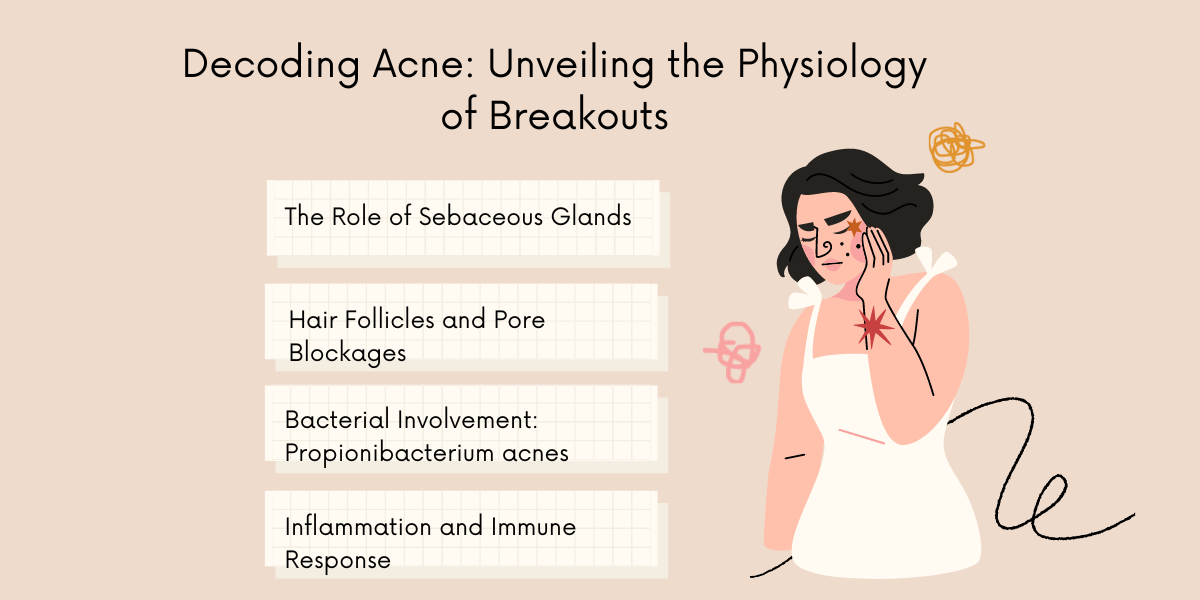What are the Physiological Processes Behind Acne Formation?
Decoding Acne: Unveiling the Physiology of Breakouts
Acne is a skin condition that affects millions of people worldwide. While it’s often viewed as a cosmetic concern, its impact on self-esteem and emotional well-being can be profound. To effectively manage and treat on it, it’s crucial to understand the physiological processes behind its formation. In this blog post, we’ll delve into the intricate mechanisms that underlie it development, providing insights that can guide individuals in their skincare routines and treatment decisions.

-
The Role of Sebaceous Glands
Acne begins with the sebaceous glands, which are responsible for producing sebum, an oily substance that lubricates the skin. When sebaceous glands become overactive or clogged, excess sebum is produced. This excess sebum provides the ideal environment for it to develop.
-
Hair Follicles and Pore Blockages
Hair follicles and pores serve as the conduits for sebum to reach the skin’s surface. In individuals prone to acne, these follicles can become clogged with a combination of excess sebum, dead skin cells, and bacteria. This blockage creates a favorable environment for the formation of acne lesions.
-
Bacterial Involvement: Propionibacterium acnes
Propionibacterium acnes (P. acnes) is a bacterium naturally present on the skin’s surface. However, when hair follicles become clogged, P. acnes can multiply rapidly within these blocked follicles. The bacterium triggers an inflammatory response, leading to the characteristic redness and swelling associated with it.
-
Inflammation and Immune Response
Acne is, in essence, an inflammatory condition. The body’s immune system responds to the presence of P. acnes and the resulting inflammation. Immune cells release substances that further exacerbate the inflammatory process, leading to the formation of papules, pustules, and nodules.
-
Hormonal Influences
Hormones play a significant role in acne formation. Androgens, a group of hormones that includes testosterone, stimulate the sebaceous glands to produce more sebum. Hormonal fluctuations, common during puberty, pregnancy, and menstruation, can trigger or worsen acne.
-
Genetic Predisposition
Genetics also play a role in acne development. If your parents or grandparents had acne, you may be more predisposed to developing it as well.
Conclusion
Understanding the physiological processes behind acne formation is essential for effective management and treatment. It dispels common myths and misconceptions about the condition, highlighting the need for a comprehensive approach that addresses the root causes. From proper skincare routines to medical interventions, individuals can take proactive steps to manage this and minimize its impact on their lives. While acne can be frustrating, knowledge empowers individuals to make informed decisions and embrace treatments that work for them.




